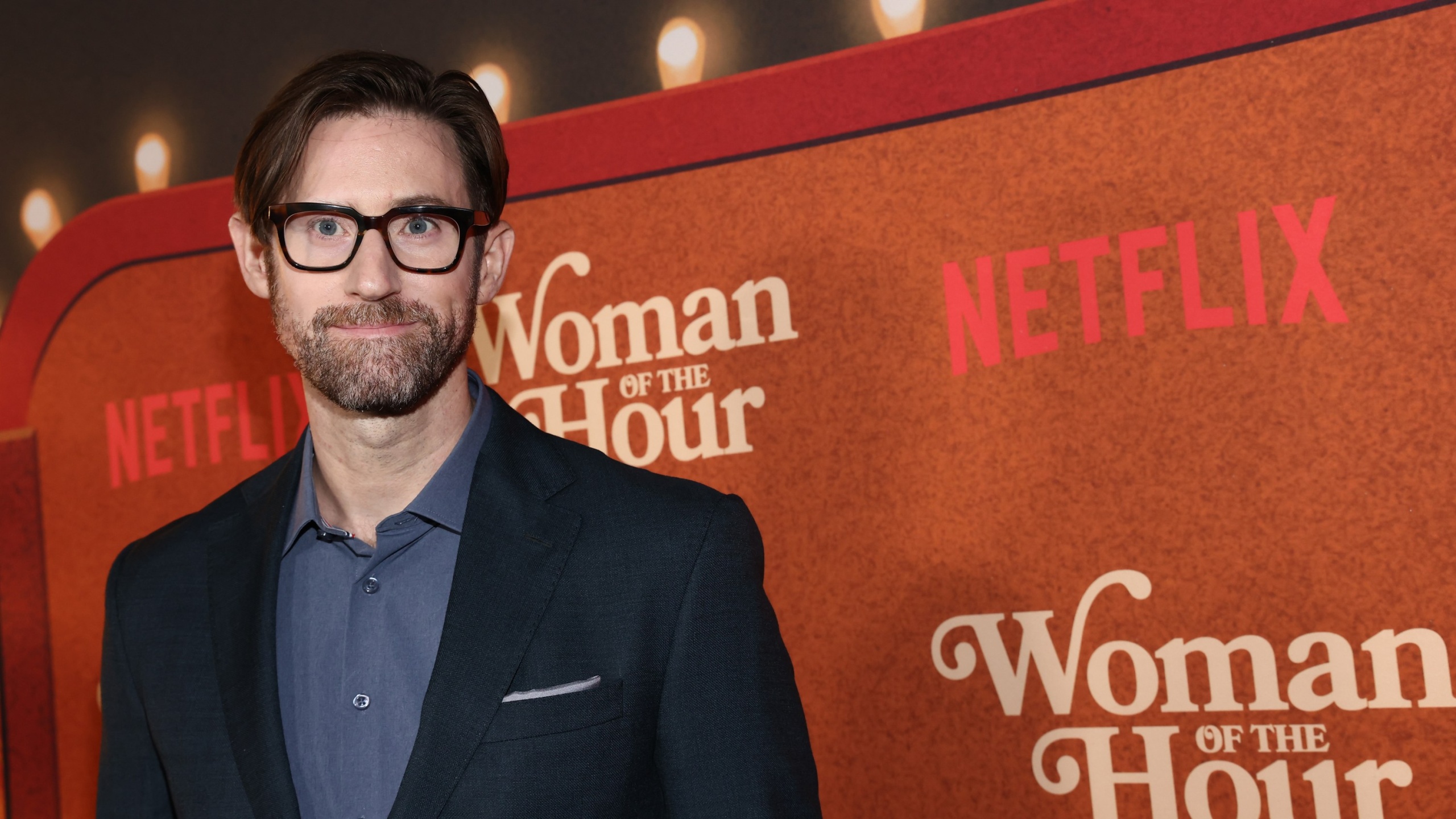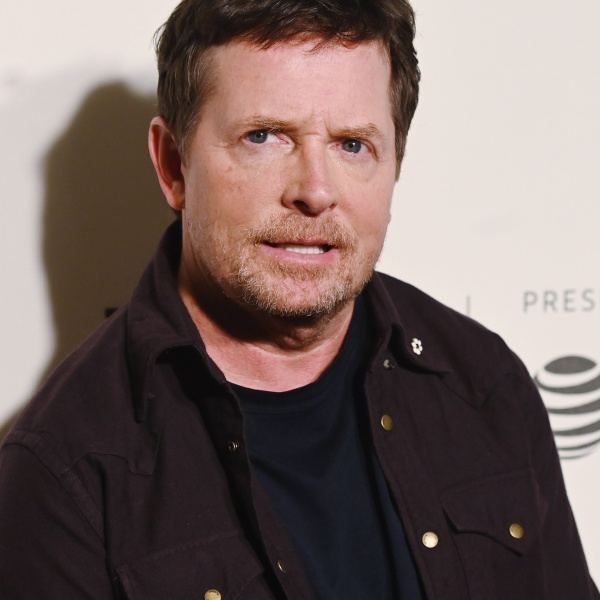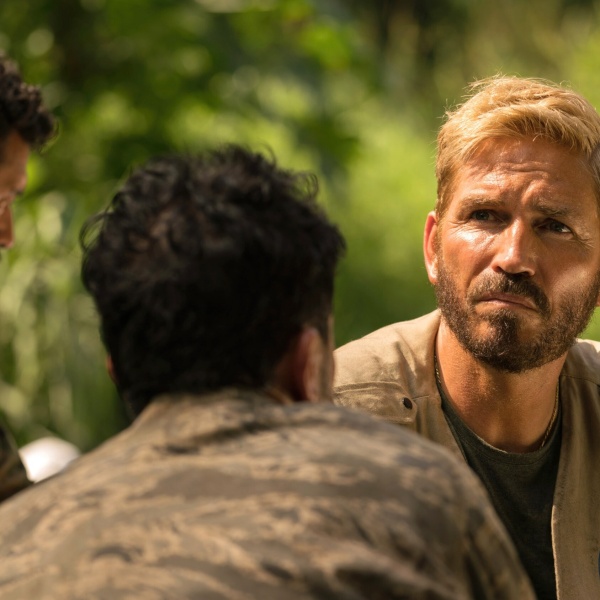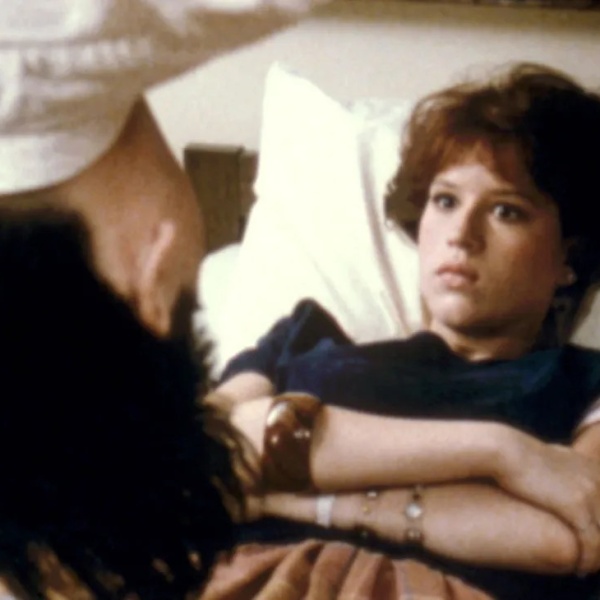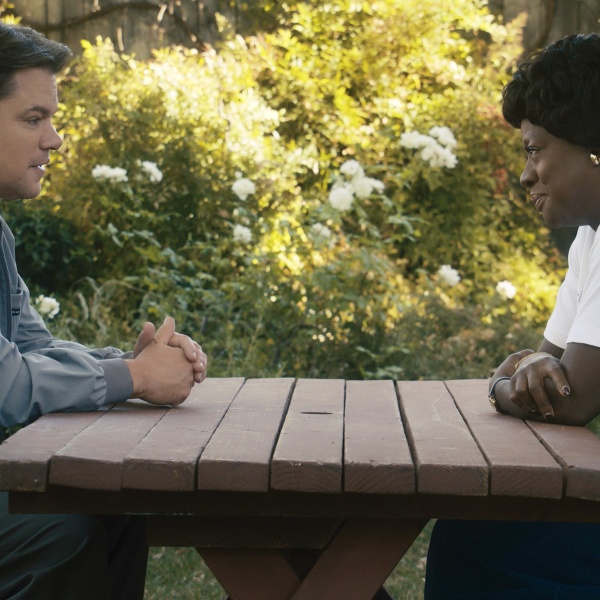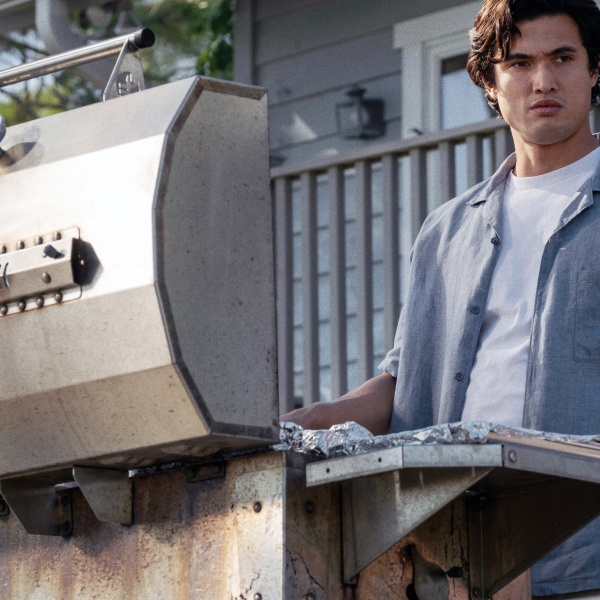[Editor’s note: The following interview contains light spoilers for “Woman of the Hour.”]
When serial killer Rodney Alcala appeared on the hit game show “The Dating Game” in 1978, he was billed as one of three eligible bachelors competing for the affection of struggling actress Cheryl Bradshaw. Alcala ultimately won a date with Bradshaw, but the wily young woman refused to go out with him, mostly because she found him to be “creepy.”
She was right to feel that way: By the time of his appearance on the game show, Alcala had already killed at least five women (in addition to a slew of other alleged crimes against men, women, and children), been listed as one of the FBI’s most wanted, and skipped his way around the country to avoid a variety of criminal investigations. “Creepy“? That was only the tip of the iceberg.
Such is the wild, horrifying true story at the heart of Anna Kendrick’s feature directorial debut (in which she also stars as Cheryl), “Woman of the Hour.” For screenwriter Ian McDonald, the story of Alcala and his terrifying crime spree, of which we still don’t know the full extent (the convicted killer, who died in prison in 2021, has been linked to 8 murders, though the number could be as high as 130), wasn’t just a splashy writing prompt, but a deeper exploration of societal forces still at play today.
McDonald’s script, which landed him on the Black List in 2017, follows Rodney (played by Daniel Zovatto) as he appears on “The Dating Game,” while also weaving together numerous flashbacks that detail some of Alcala’s most heinous crimes. It’s propulsive and chilling and clever, billed by Kendrick as a combination of both “Zodiac” and “No Country for Old Men.” For McDonald, it’s even more than that, not just a film “about serial killers,” as he recently told IndieWire, but “about toxic male behavior on a spectrum.”
“Rodney represents the most extreme end of that spectrum,” McDonald told IndieWire. “Basically, for a very long time, there were a lot of things that we now view as red flags that, back in 1978, were not considered a red flag. Someone could work their way along the spectrum quite far before anyone said, ‘Hey, this might be a problem.’” That’s the heart of “Woman of the Hour,” which is as much about serial killers as it is about the worlds that foster them.
Ahead, McDonald tells IndieWire about the origin of his script, the insights from the women in his life that helped guide it, and what it really means to tell a true story.
The following interview has been edited and condensed for clarity.
IndieWire: How did you first find out about this story? In our true crime-mad media landscape, it’s serial killer story that’s been under-explored, particularly considering all its wild elements.
Ian McDonald: I had been wanting to write a true-crime story for a while, and I was sifting through a lot, looking around online, that’s the short and true answer. But the reason I settled on this one is that most true-crime stories — and I’ve had a lot sent to me [to adapt] since this got made — are very sad and very disturbing, but aren’t all that socially useful, and I thought this could be useful.
In true-crime circles, people like to compare Rodney Alcala to Ted Bundy, because they’re both kind of handsome and well-educated, but in a lot of ways, they’re polar opposites. Ted Bundy was a chameleon. He was good at making people think that he was something he wasn’t. Rodney, on the other hand, when it came to light what he had done, there was nobody who was like, “No, not Rodney!” Everyone’s just like, “Yeah, that kind of checks out.”
He was very open with a lot of his bad behavior, and that was the thing that I found most interesting about him was, not that people didn’t know, but they kind of suspected and that there were a lot of people looking the other way, and not just individuals, but institutions. That’s what allowed him to flourish. We’re still dealing with that now, in some ways that are very different and in other ways that are exactly the same.

Even today, when someone commits a horrible crime, you’ll see their neighbors on the news: “Oh, I had no idea. I never would’ve thought that they could’ve done this.” As you said, that wasn’t really the case with Rodney. Most people seemed to, even if they met him briefly, feel like, “Oh, there’s something wrong here.”
He would take his photo albums into work at the L.A. Times and there were really awful pictures in there, and people were just kind of like, “Well, that’s Rodney, I guess this is just his thing.” It’s baffling that that served as an excuse, especially given by the time he was at the L.A. Times, he had already been arrested. It’s just crazy.
How did you work out the structure of the screenplay?
That was one of the first things that came to me, and it was really a pragmatic decision. In the original “Dating Game,” basically, every episode has two segments, a bachelorette and then another bachelorette, and each is about twelve and a half minutes long, so they’re very, very short. If you’re writing about that [in real time], it can either be the opening 12 minutes of the movie or it has to be something else. I like structural difficulty, it feels like a puzzle to me, and it also created space for these other narratives.
How did you choose which crimes you wanted to include alongside “The Dating Show” elements?
That’s the thing that probably changed the most over the years of development, because there were a lot of people who he hurt, and a lot is dictated by how you open and close a movie that will tell you a lot about your themes. There was a point where it’s just like, “Start with the earliest crime and then work your way forward.” And yet, somehow, telling it in a strictly chronological fashion, while it made a certain kind of sense, it wasn’t actually underlining the themes and the ideas of the piece that we were hoping for.
One of the conversations Anna and I had was, the movie is about the danger that comes with intimacy, and if you’re simply tricking a child to get into your car, that’s not a willing intimacy. You’ve simply duped someone. But for a lot of these people, he could be charming for a time and he could sort of win over their trust. So we looked for stories that kind of underlined that and helped us sort of explore and deepen those themes.
Which real people did you speak to, if any, who were involved with these crimes?
None. I spoke to some real people who met Rodney and who knew him personally, to get a better sense of what he was like. I tried to get ahold of the original Cheryl. I looked for her, just couldn’t find her anywhere and sort of took that as a sign that she didn’t want this 15-minute encounter to define her life, and so I tried to respect that and not pursue [her more]. Most of what I got, in terms of what people were like and firsthand encounters with him, were based on old newspaper clippings and magazine articles and things like that.

There’s a subplot in the film about a friend of one of Rodney’s victims attending his “Dating Game” taping and recognizing him. I assume that’s not true?
It was funny. On our first call, Anna and I both started geeking out over this book called “The Things They Carried” by Timothy O’Brien, and there’s this one chapter in it that I really love where he talks about what makes for a real war story. He basically writes, “There are things that happened, which you hear, and it’s just like, ‘Well, that’s not what it was like to be in Vietnam. I get that that happened, but it’s not what it felt like.’” And then he gives an example of a story that never happened and he’s just like, “But you know what? That’s what it felt like to be there.”
And so, everything that we added, any fictional inclusions, was intended to be in service of some other truth. That character, in particular, I read a lot of stories about friends and family members who saw a victim with this guy and were just like, “This feels wrong,” and who tried to get attention drawn to this skeevy guy who was the last person they saw with their friend and just weren’t getting anywhere with it. So it was like, “OK, that’s a perspective that feels relevant to this and interesting and we need to find a way to include it in there.” It’s fiction in the service of truth.
The film places so much importance on and respect for how these women are feeling, especially Cheryl. When she meets Rodney, and she has a bad feeling about him, she trusts that instinct. We don’t see that a lot in movies or in real life. What sort of feedback did you get from the women in your life to help shape that aspect of your script?
Before I started writing, there was the historical research to kind of nail down a chronology of events, but then there’s the emotional research, which is just getting together with a bunch of female friends and saying, “Tell me your stories about dating. Tell me your stories about guys.” [I asked] friends who are actresses, too, because I wanted to make sure that I was getting their experiences right. That’s when I first started hearing stories about women, like, “Oh, yes, when I leave a date, I walk back to my car, and I have my car keys sort of poking between my fingers.”
It’s tricky to talk about this, because men have experiences that are similar, but not exactly the same. I’m 6’1” and 200 pounds. That obviously is always going to make a difference [for me], but I’ve wound up in precarious situations with people who I thought were friends, and then it turns out they’re really not friends, and it gets real weird real fucking fast and you find yourself doing this odd conversational dance to get out of it.
There’s a little bit of stuff drawn from personal experiences, but then it’s also just listening. It’s just listening and trying to hear people, and that’s what made Anna so wonderful to work with. She was really great at going through the script in this very minute fashion and saying, “This line just doesn’t ring true to me.” It’s a very weird thing to have your female director say, “I like that you’re writing these women with agency, you need to give them less, because right now she’s tough and bold and, the truth is, if I’m a hitchhiker trapped in a car with this guy, I’m going to be really nice and I’m going to be really friendly and I’m going to try to get out of there in a way that’s subtle, without hurting his feelings.” She was a very incisive reader and helped kind of guide and shape the script in a way that was wonderful.
That hitchhiker subplot you mention is great, because it’s based on a true story, but it also fits what you were aiming for with the themes of this script. When you found that story, what was that like for you as a writer?
That story, in particular, was something that, in earlier drafts, I kind of shied away from. It wasn’t because it wasn’t interesting, it was that, as you’re writing it, you’re trying to find the correct level of darkness for the movie. If it’s too dark, it winds up being oppressive and kind of dramatically monochromatic, and it can wind up backfiring and either make people just shut the movie off or, worse yet, laugh at it. I’ve been to movies that are bleak in a way that becomes silly, and you don’t want that. And yet, at the same time, if you do the opposite and you soft-pedal the story, then you risk whitewashing the events and going like, “Well, he really wasn’t that bad” or “He was bad, but he had a code,” and you don’t want to do that either.
Because that event comes late in the movie, my initial thinking was, “God, we’ve already seen so many scenes of Rodney brutalizing these women. Do we really need another?” And it was Anna who was like, “If he doesn’t attack her, we don’t get to see her be clever, and it’s really, really important that we get to see her be clever and that we get to see her outwit him. You don’t get one without the other, so we really need to include that.”
Chloe Okuno was originally set to direct the film, with Anna starring. When things changed, and Anna also came on as director, what were your first conversations with her after that?
There were all these weird little connections [between us]. We started bonding over very weird things very quickly, like I mentioned, “The Things They Carried,” and then, I’m just like, “By the way, this might be strange, but I feel like I should tell you now, because if I don’t tell you now it’s going to feel weird later, but I’m also from Maine and we grew up like 10 minutes apart from each other.” Apparently, we were in a Christmas pageant thing when we were six years old together.
The thing that I think surprised me the most is the kind of fearlessness and the seriousness of intent [she brought immediately]. She’s a big true-crime fan, she knows the case very well, she wasn’t afraid to engage with the darkness of the subject matter, and she also just had a super-clear vision for the project. She was just like, “I kind of what it to be like ‘Zodiac’ meets ‘No Country for Old Men,’” and it’s just like, “Well, fuck. Those are two of my favorite movies, so yes, I love that.” That is such a colossal swing for someone who’s directing their first film, and you can definitely kind of see those comps when you watch the movie, but what’s cool to me is that you can see so much else in there that’s pure Anna.
Were you able to be on set a lot?
I was really only there for one day during the L.A. portion of the shoot. There were COVID restrictions, which made them cut down how many people could be on set, but the day I was there, it was great. My wife and I get a little cameo in the end of the movie, we’re in the diner. You probably won’t see me, you’ll probably see my wife. It was very funny. We showed up, and my wife has short hair that, at the time, was dyed bright blue, and Anna’s just like, “That’s not going to work. Let’s get you a wig.”

The film has a pretty tight running time, it’s under 90 minutes, so economical. Was that your original intention? How many pages was the original script?
The original script was like 95, so it was a little longer, but it wasn’t a lot longer. I like economy in storytelling, which isn’t to say that I like things that are short. I can think of long movies that feel economically told, where you wouldn’t want it to be a second less, and it can still be two and a half hours.
It’s the reason to tell this as a movie and not as a limited series. There are ways in which the story would’ve been served as a limited series, where you could have spent more time with some of the secondary characters, but I think film prioritizes endings in a way that TV doesn’t, and endings tell you what the story is actually about.
There was this great Edward Albee quote where he was talking about a Samuel Beckett play and he said, “There’s an essencing process that happens in ‘Krapp’s Last Tape,’” where he basically took all this bigger, bolder work and he shrunk it down, and I love essencing as a word to describe it. When you’re doing a film, what’s the essence of the story and how can you make sure that everything is serving that essence?
“Woman of the Hour” is now streaming on Netflix.
